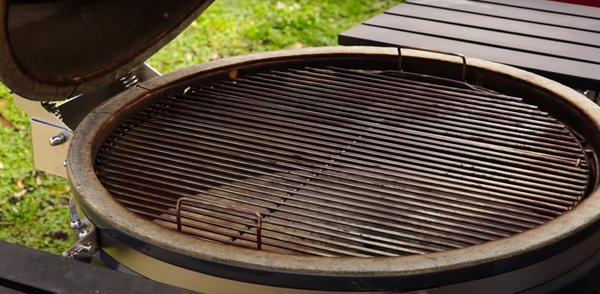
A Beginner’s Guide to Kamado Grills
Welcome to Smoky Ribs BBQ! I’ve been grilling, smoking, and cooking for years, and I love sharing everything I’ve learned through my videos and recipes.
Now, let’s dive into today’s topic: Kamado cookers. These versatile ceramic grills are a powerhouse in the world of barbecue. They’re efficient, retain heat incredibly well, and can handle everything from low-and-slow smoking to high-temperature grilling. In this guide, I’ll walk you through the basics of setting up and running a kamado cooker, so you can get the best results right out of the gate.
What Is a Kamado Cooker?
A kamado is a thick-walled ceramic grill that operates like a charcoal-fueled oven. Most kamados are made from heavy-duty ceramic, though you can also find cast iron models. The thick walls help retain heat, making them highly efficient compared to other charcoal grills.
Regardless of the specific model, they all function in a similar way: heat and smoke travel from the firebox at the bottom, draft through the adjustable vents, and create a controlled cooking environment.
Setting Up Your Kamado for Success
1. Understanding the Firebox and Airflow

Inside every kamado, you’ll find a firebox, which is where the magic happens. This is where your charcoal sits and burns. Most kamados have a bottom grate to allow airflow and an adjustable vent system. Airflow control is key to maintaining stable temperatures.
-
The bottom vent controls how much oxygen gets in.
-
The top vent helps manage heat and smoke output.
-
By adjusting both, you can fine-tune your cooking temperature.
2. Choosing the Right Charcoal
Most manufacturers recommend using lump charcoal instead of briquettes. Lump charcoal burns cleaner, hotter, and produces less ash, making it perfect for kamado cooking. My go-to brand is Fogo Super Premium Lump Charcoal—those big chunks burn for a long time and give you that consistent heat you need for long cooks.
3. Lighting Your Kamado
When starting your fire, always light your charcoal in the middle so it spreads evenly. I prefer using natural fire starters like tumbleweeds or paraffin wax cubes. Avoid lighter fluid—it’ll mess with the flavor of your food and isn’t necessary.
4. Using a Heat Deflector for Indirect Cooking

One of the best features of a kamado is its ability to cook low and slow. By placing a ceramic heat deflector between the fire and your food, you create an indirect heat environment, perfect for smoking meats like pork butt or brisket.
Cooking Low and Slow: Pork Butt for Beginners
If you’re new to smoking, pork butt is a great place to start. It’s forgiving, packed with marbling, and nearly impossible to mess up.
-
Seasoning: I like to use a mustard binder before applying my rub. It doesn’t make the meat taste like mustard—it just helps the rub stick better and adds a subtle acidity that enhances the flavor.
-
Smoking Wood: Pecan and hickory are my go-to woods for pork. A little goes a long way, so don’t overdo it. You can’t remove too much smoke once it’s in there!
-
Cooking Temp: Aim for 250-275°F. Kamados are great at holding steady temperatures, making them ideal for slow cooking.
-
Vent Adjustments: Once you hit 200°F, start dialing back your vents. The bottom vent should be open just a quarter of an inch, and the top vent should be about a third open. Every kamado is a little different, so find the sweet spot for yours.
Why Kamado Cookers Are Awesome
Kamados aren’t just for smoking—these things are incredibly versatile. You can use them to:
-
Sear steaks at high heat
-
Bake wood-fired pizza (yes, really!)
-
Roast whole chickens or turkeys
-
Even bake bread
They retain heat so well that you don’t need a water pan, and once you’re done cooking, you can close the vents to snuff out the fire and save unused charcoal for next time.
Final Thoughts
Kamado cookers are one of the most efficient and versatile ways to cook with charcoal. While I personally love offset smokers for that deep smoky flavor, kamados do an incredible job at locking in moisture, holding temperatures, and delivering fantastic barbecue.
If you’re just starting out, take your time learning how your vents work, experiment with different charcoal and wood combinations, and most importantly—have fun with it!
For more tips, recipes, and barbecue inspiration, check out Smoky Ribs BBQ on YouTube.
